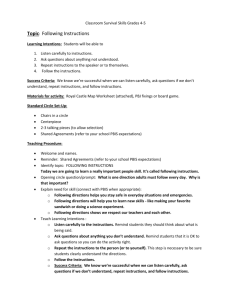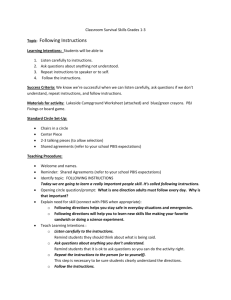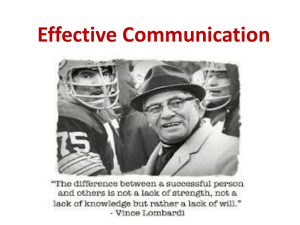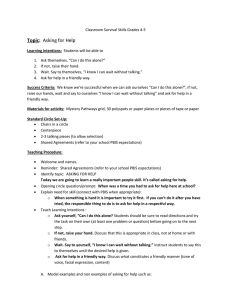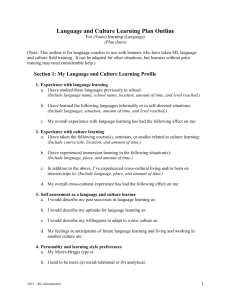Classroom Survival Skills – K4-K5
advertisement
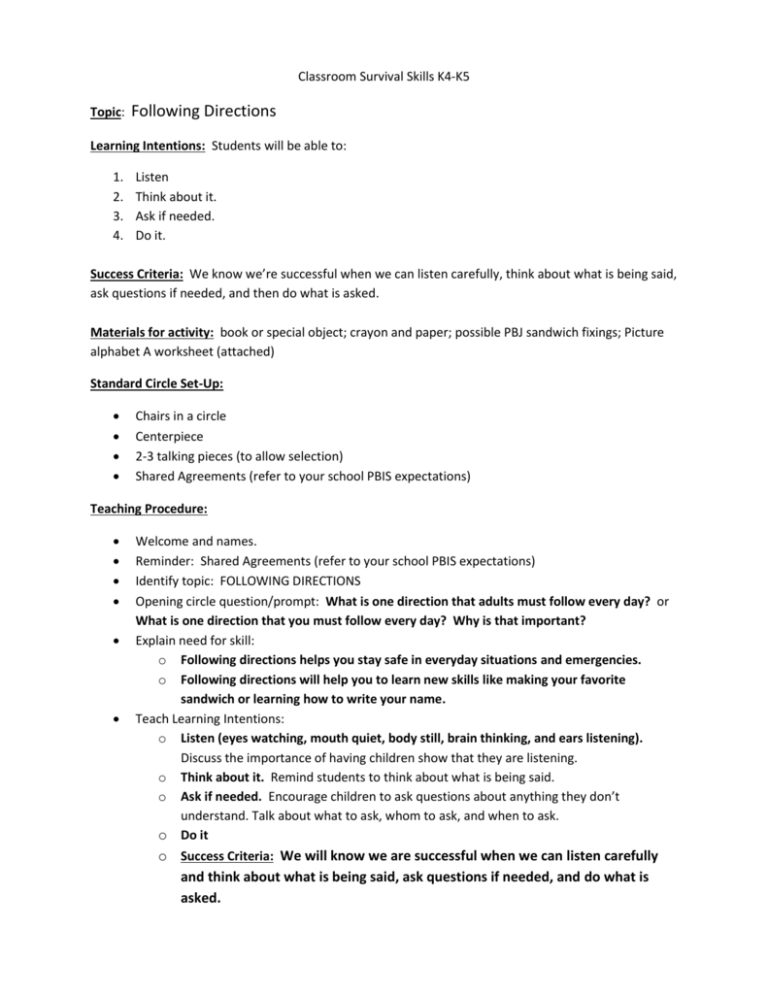
Classroom Survival Skills K4-K5 Topic: Following Directions Learning Intentions: Students will be able to: 1. 2. 3. 4. Listen Think about it. Ask if needed. Do it. Success Criteria: We know we’re successful when we can listen carefully, think about what is being said, ask questions if needed, and then do what is asked. Materials for activity: book or special object; crayon and paper; possible PBJ sandwich fixings; Picture alphabet A worksheet (attached) Standard Circle Set-Up: Chairs in a circle Centerpiece 2-3 talking pieces (to allow selection) Shared Agreements (refer to your school PBIS expectations) Teaching Procedure: Welcome and names. Reminder: Shared Agreements (refer to your school PBIS expectations) Identify topic: FOLLOWING DIRECTIONS Opening circle question/prompt: What is one direction that adults must follow every day? or What is one direction that you must follow every day? Why is that important? Explain need for skill: o Following directions helps you stay safe in everyday situations and emergencies. o Following directions will help you to learn new skills like making your favorite sandwich or learning how to write your name. Teach Learning Intentions: o Listen (eyes watching, mouth quiet, body still, brain thinking, and ears listening). Discuss the importance of having children show that they are listening. o Think about it. Remind students to think about what is being said. o Ask if needed. Encourage children to ask questions about anything they don’t understand. Talk about what to ask, whom to ask, and when to ask. o Do it o Success Criteria: We will know we are successful when we can listen carefully and think about what is being said, ask questions if needed, and do what is asked. A. Model examples and non examples of following directions: a. Have a student place a book or object in the room and direct the teacher on how to retrieve it. Model good listening and following directions skills. Make sure to model asking a clarifying question for demonstration purposes. b. Ask students: What did you notice about how I listened and followed the directions given? c. Have a student place a book or object in the room and direct the teacher on how to retrieve it. Model poor listening and following directions skills. d. Ask students: What did you notice about how I listened and followed the directions given? How could I have done better? B. Provide students with examples and non examples of following directions such as: a. Allow all students to practice following directions by having them retrieve items in the room that you have pre-selected. They will have to listen and ask questions to know if they have found the right object. b. Practice procedures for fire drill. C. Practice/Role Play 3x: Have each student describe a situation in which they might want to use this skill. Role play these situations - or use the examples below. (For a detailed model of how to use role play and give feedback, see Skillstreaming.) a. Have students follow your directions in completing a simple puzzle or stacking activity. b. Provide students with a crayon and a small piece of paper. Give directions to students to draw a simple design on the paper. Activity to practice skill: PB&J Have students follow your directions to make a simple peanut butter and jelly sandwich. Find the Letter Complete the Picture Alphabet A worksheet. Have students find the letter Aa in the picture. Find words that start with the letter Aa. Color the picture. Closing Circle Questions: Who will give you directions this week and how will you practice following those directions (Listen. Think about it. Ask if needed. Do it!)?
